Havasu to Hole in the Wall (HITW)
The biggest two reasons for rolling through Havasu were to visit the Desert Bar, and to pick up a cargo box for Howie. Well, timing being what it is, we missed the Desert Bar because it’s only open on weekends and we didn’t have the time to stay that long in Havasu. You can see what we will go back for at another time here: http://www.thedesertbar.com/
We did pick up the cargo box, and I exercised my microscopic tool complement to get it installed while parked at the curb. Not too bad – – drill a few holes and bolt it down. I didn’t even have to rat-tail the holes out to fit (how often does that happen?).
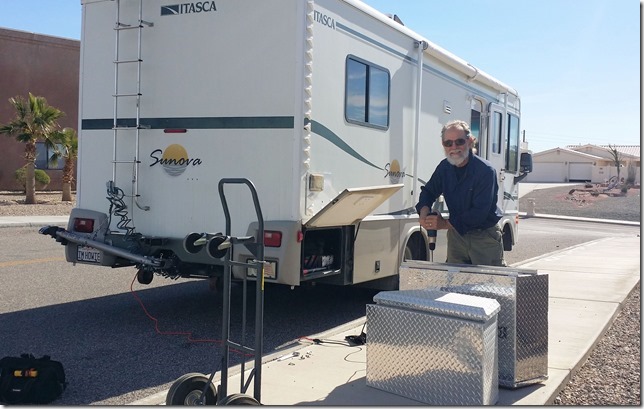
All-in-all, we had a pleasant camp at Havasu, up on a rise with a peek-a-boo look at the distant lake. We had a great neighbor (Hi Bob) and enjoyed a few chats. The moon filled in while we were there, and we got to see a simultaneous sunset/moonrise, a very charming experience in these wide-open desert spaces.
There goes the sun, glinting off Ralph’s hood while we race away from it at 700 mph on the spinning Earth.
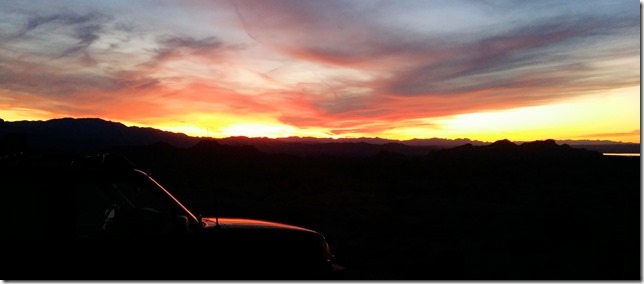
And here comes our largest satellite from the other direction, lighting up the ghostly RV’s.
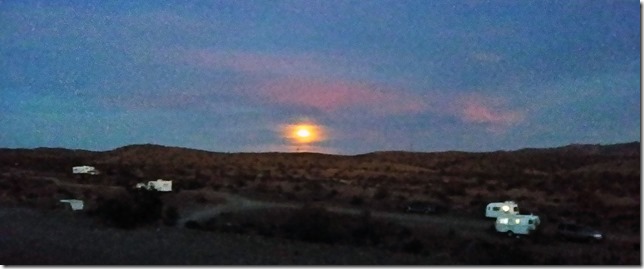
Under such circumstances, a fire is mandatory of course.
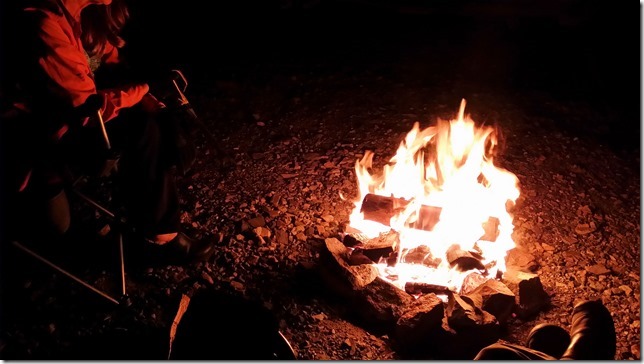
But it was still a little crowded for us, so next to civilization. It was time to move on – besides, we have a lot of preparation to do for our big trip later this year (four months to Alaska and back). Next morning, we pulled up stakes and hit the road. Since our route back home went past the Mojave Preserve, we decided to visit a favorite camp, Hole in the Wall (HITW).
But before could get out of Havasu, US-95 presented us with an uncharacteristic traffic jam, even for a large town. We had a half-mile of cars in front of us as we got halfway into town. The reason became apparent – someone was moving the widest “WIDE LOAD” setup I’ve ever seen on a public street. This thing looked like the dump-bed off of one of those gigantic mining trucks, you know the ones with the 6-foot-high tires that weigh three tons per tire. The bed was almost 40 feet wide, and took up three lanes of traffic. “Oversize Load” just doesn’t quite cover this one. I have no idea where it was going, but fortunately we passed it by reasonably quickly and went on our way.
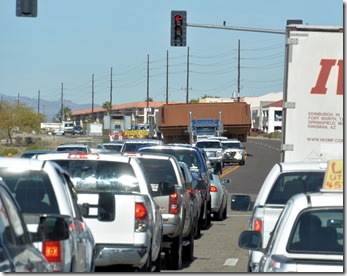
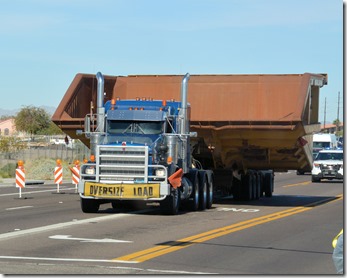
Besides bizarre traffic conditions, one of the gifts of “traveling around” is the varied people – – and ideas – – that you run into. Here is a snapshot of a clever bicycle carrier we saw on a fifth-wheel at a gas stop. The slotted posts are plastic-sleeved, and they accept the pedal cranks without damaging them. All that remains is to strap down the tires into a simple tray. Elegant, sturdy, light, cheap. I love finding stuff like this, it scratches my Engineering itches.
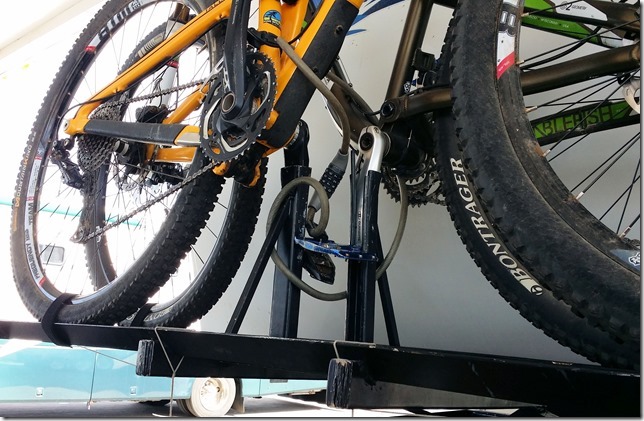
We arrived at HITW (less than 100 miles from Havasu) in the middle of the day. It is buried in the middle of the Mojave Preserve, about 20 miles north of I-40 and 60 miles west of Needles. (I can’t seem to make this map tool show “Barstow” instead of Daggett or “Needles” just above Topock. Kingman, AZ is just off to the right.)
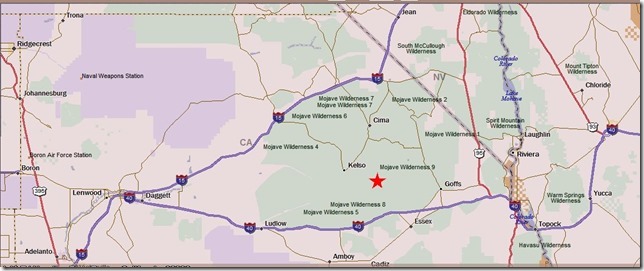 HITW is a wide-open camp, BLM-cheap, with great surrounding scenery and trails. It even has a dump station. We will hike the remarkable “Rings Trail” while we are here and I’ll do a short post on that later on.
HITW is a wide-open camp, BLM-cheap, with great surrounding scenery and trails. It even has a dump station. We will hike the remarkable “Rings Trail” while we are here and I’ll do a short post on that later on.
We settled into a favorite spot, where we have an unobstructed view of the “hole”, which is a large cleft in a long ridgeline (wall). 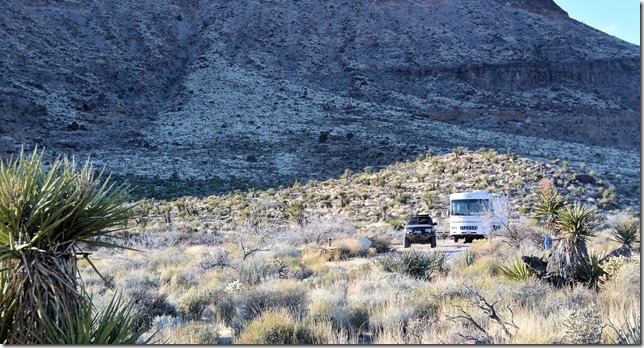
In the late afternoon, we took the short hike to the visitor’s center, which is nicely placarded with metal signs naming the various plants. A paper guide gives more info on how 23 different plants were used by the Indians. It never fails to amaze me how the indigenous hunter-gatherers found uses for virtually every stem, flower, seed, and branch that grew here. Foods, medicines, tools, fibers, weapons. All were to be had, growing out of the ground, if you knew where to look.
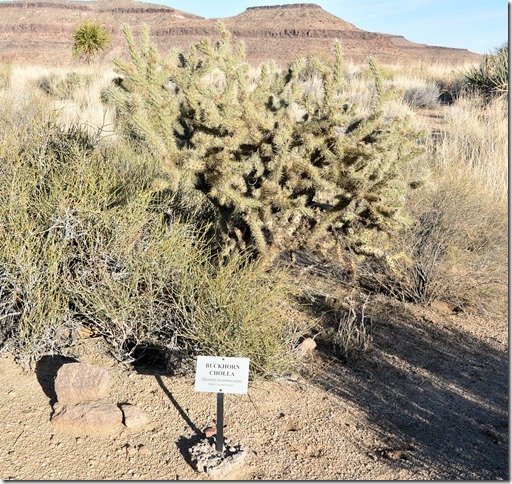
Here’s an interesting one, the “paper bag bush” which is used for medicines and flavoring in cooking. Its seed pod grows inside a gossamer shell that looks for all the world like a pale beige black-widow egg sack. When the seeds are ripe, they burst out of the sack and blow away on the wind.
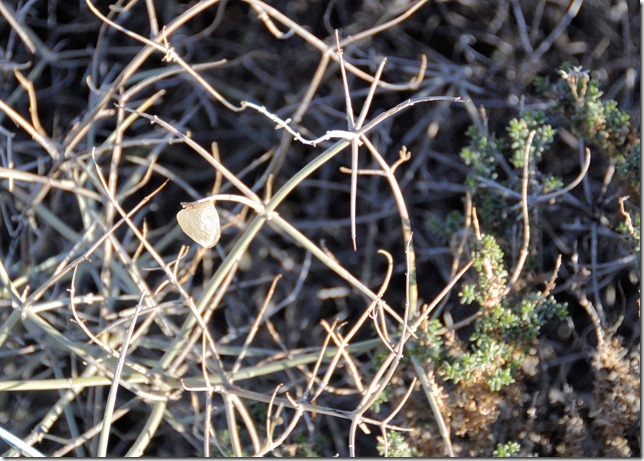
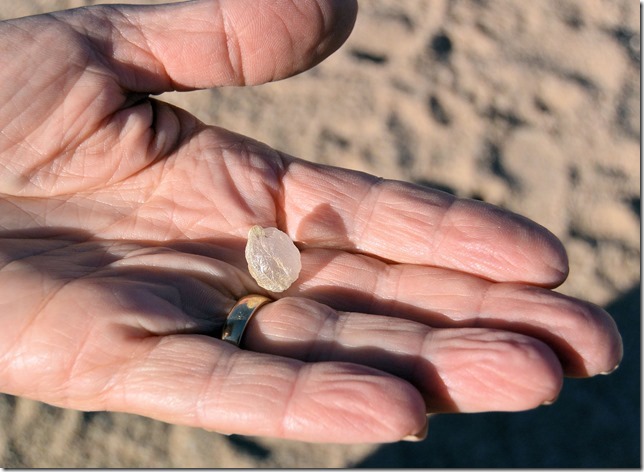
One of dozens of varieties of cholla, this “pencil cholla” is also called the “darning needle” cholla. These incredibly sharp spines, like other chollas, have microscopic reverse barbs along their length, making them difficult or impossible to remove. Beautiful, but hateful.
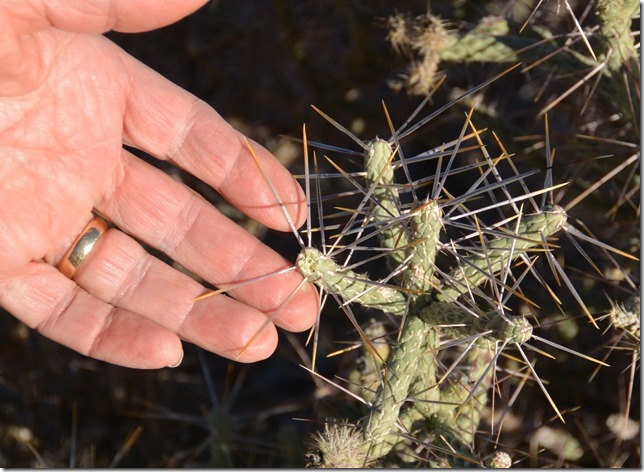
Back at camp after our walk, we spotted a little gift from a pencil cholla, clinging to Howie’s tire in hopes of getting a ride to some nice new roosting area. Demonic plants. Symbols incarnate of the eternal battle between Good (us) and Evil (cholla).
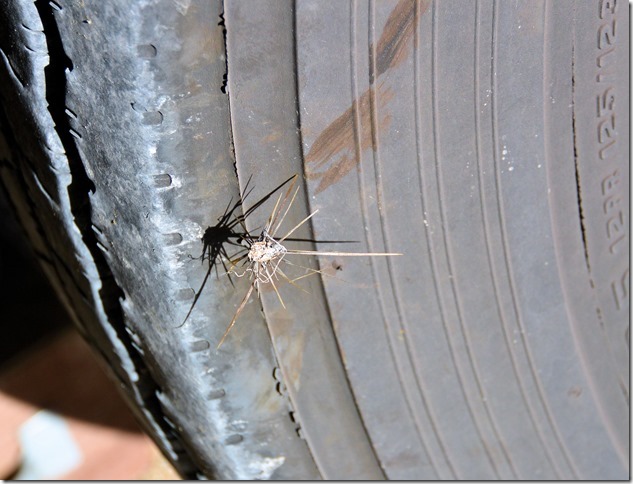
Evening came upon us, and this higher desert cooled rapidly to almost 20 degrees less than Havasu. The local fauna used the slanting rays of the sun to forage for bits and morsels amongst the brush. We settled in and called it a day. A nice day.
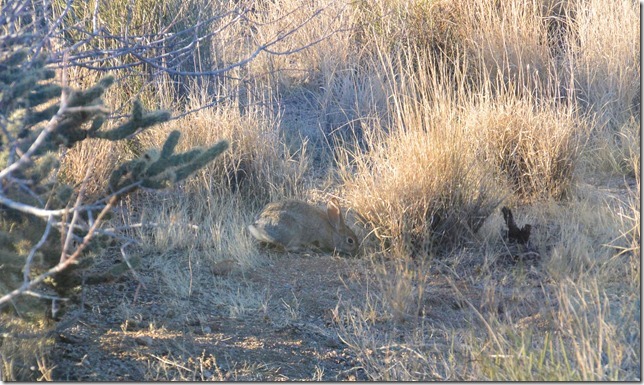
Comments
Havasu to Hole in the Wall (HITW) — No Comments
HTML tags allowed in your comment: <a href="" title=""> <abbr title=""> <acronym title=""> <b> <blockquote cite=""> <cite> <code> <del datetime=""> <em> <i> <q cite=""> <s> <strike> <strong>